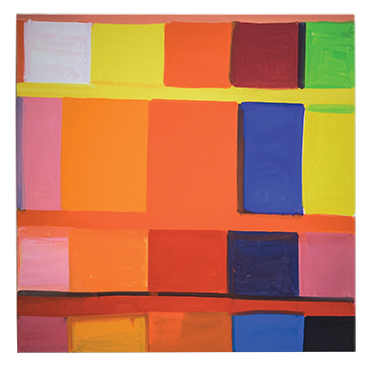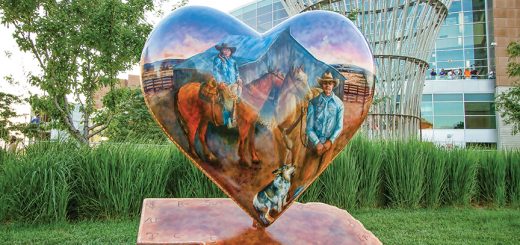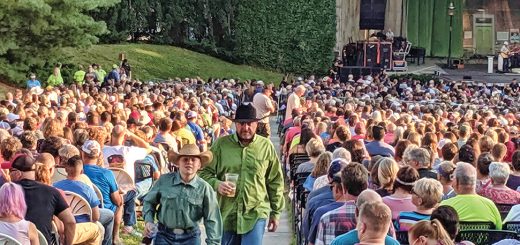Sheldon Museum of Art

by Ingrid Holmquist
Sheldon Museum of Art is a must-see in Lincoln on the University of Nebraska-Lincoln campus.
Its striking architecture draws in passersby with its travertine columns and expansive windows.
Bequests from Mary Frances Sheldon (1892–1950) and her brother Adams Bromley Sheldon (1887–1957) provided the primary funding for the museum, which opened in May, 1963. Renowned architect Philip Johnson was selected to design the museum with an elegant proposal based on an arched pavilion in the garden of his home, the Glass House.
As an academic art museum, Sheldon is a hub for students and others to engage with the visual arts. The museum hosts many cultural events including tours, exhibition-related activities in conjunction with Lincoln’s First Friday art walks, and lecture series.
When Wally Mason joined Sheldon Art Museum as its director and chief curator, he brought innovation and energy that put the gallery on the map as an especially distinctive destination for students and visitors alike.
“Sheldon is an institution that I have admired for a long time, and the collection represents such a prescient, unique vision. It is a museum that shows us how to live in the present and how the future can be built on tradition,” Mason told Steve Smith with University of Nebraska-Lincoln in a news release. “It has benefited from outstanding leaders who crafted an extraordinary permanent collection and exhibition history.”
Walking through Mason’s curated galleries, it’s easy to see the time and creativity that went into compiling such an artistic venture. He decided to move from a typical exhibition model of arranging galleries in chronological order. Instead, he relies on a common question, idea, or characteristic to tie together the works in a gallery. Walking into each room is a new adventure.
“We are treating these galleries like they are little workshops or laboratories,” he said. “You may walk to one place and say ‘oh, I get this,’ but then we’ll take you somewhere totally different. It allows us to land on an idea and explore it and move on.”
In one room, there’s a single, monumental-scale painting with benches facing it. By putting only one painting in this space, Mason is insinuating that you should spend ample time with this work. Sit, relax, ponder; this object is meant to be viewed without distraction.
“Here, we’re suggesting that really large, important paintings need a lot of time,” Mason said of the canvas. “We’re not cluttering the room with anything else.”
In another gallery, pairs of artworks have been installed in close proximity to each other, potentially affecting visitors’ perceptions and interpretations of the works.
“An art museum should be a place for being open-minded,” Mason said. “We need to set a tone where we are inclusive and welcome multiple perspectives.”
As a teaching museum, Sheldon schedules its exhibitions to coincide with the academic calendar of the University of Nebraska. The museum opens new exhibitions each fall, spring, and summer.
The museum’s collection comprises over 12,500 objects including more than thirty outdoor sculptures installed throughout the university’s city and east campuses. The sculptures include works by Jun Kaneko, Gaston Lachaise, Jacques Lipchitz, Claes Oldenburg and Coosje van Bruggen, Richard Serra, Yinka Shonibare, and Mark di Suvero.
Mason sees the role of a college art museum as similar to that of a library—a venue for social, artistic, and intellectual growth.
“A good academic art museum is reflective of the past, but always asks questions about the present with exhibitions that are issue based,” he said. “Students identify with our objects and grow a little bit through them.”














Recent Comments